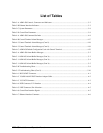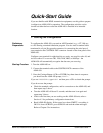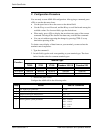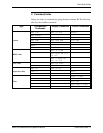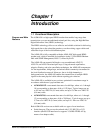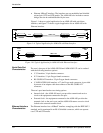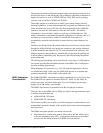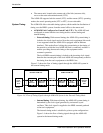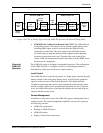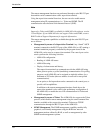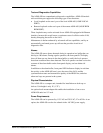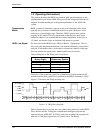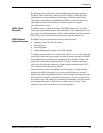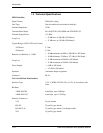
Introduction
ASMi-450 Installation and Operation Manual 1-3
The interface includes a full-feature remote bridge, that operates at the physical
and data link layers of the OSI model, and is therefore completely transparent to
higher level protocols, such as TCP/IP, DECnet, XNS, ISO, and to operating
systems, such as NetWare, VINES, and 3COM+.
The bridge operates as a media access (MAC) layer remote bridge with self-
learning capabilities: it learns and automatically recognizes the addresses of the
nodes attached to the local LAN (the LAN directly attached to the ASMi-450
interface), and uses this information to filter the LAN traffic. The address
information is stored in tables, which can store up to 10,000 addresses. The
address information is automatically updated (aging time is 5 minutes, that is, if
no frames are received from a node for 5 minutes, the node address is
automatically removed from the tables to ensure that only fresh addresses are
used).
Therefore, the bridge blocks the packets addressed to local nodes, and forwards
through the ASMi-450 link only multicasts, broadcasts, and packets addressed
to nodes attached to the remote LAN. To increase transmission efficiency, the
bridge compresses short packets by automatically recognizing the padding bits
in 64-bit frames, transmitting only the payload, and reconstructing the packets
at the remote end.
The filtering and forwarding can be performed at a rate of up to 15,000 packets
per second (provided the bandwidth selected on the HDSL link is sufficient to
carry the resulting payload rate).
When bridging is not necessary, e.g., for LAN extender applications, the user
can disable the bridge: in this case, the ASMi-450 operates as a repeater that
transfers transparently all the traffic to the remote end.
HDSL Subsystem
Characteristics
The ASMi-450 HDSL subsystem uses duplex transmission over one 2-wire line.
The ASMi-450 can operate on unloaded AWG-22, AWG-24, and AWG-26
twisted-wire pairs, and other similar pairs. Up to two bridged taps, having a
length of up to 500 meters, are tolerated.
The HDSL line interface is terminated in an RJ-45 eight-pin connector.
The line code on the HDSL lines is 2B1Q at a symbol rate approximately equal
to half the maximum data rate:
• ASMi-450/768: 392 kbaud
• ASMi-450/1152: 584 kbaud.
The increased symbol rate is used to provide framing and synchronization, and
an embedded operations channel, which enables end-to-end system management
and supervision.
The HDSL subsystem operates in a master-slave mode:
• The central unit, located at the central office side of the link, which serves
as the line termination unit (LTU), controls the system start-up procedure,
and provides the timing reference for HDSL line transmission.



